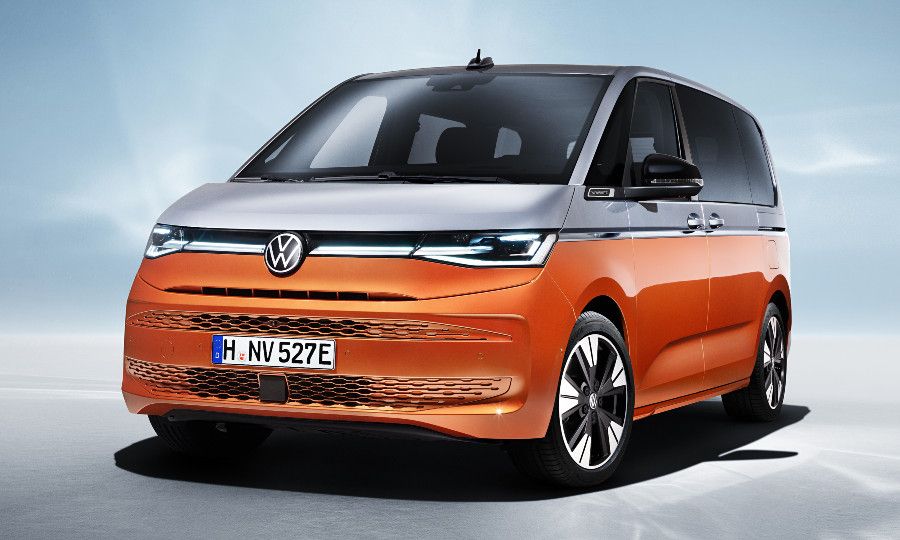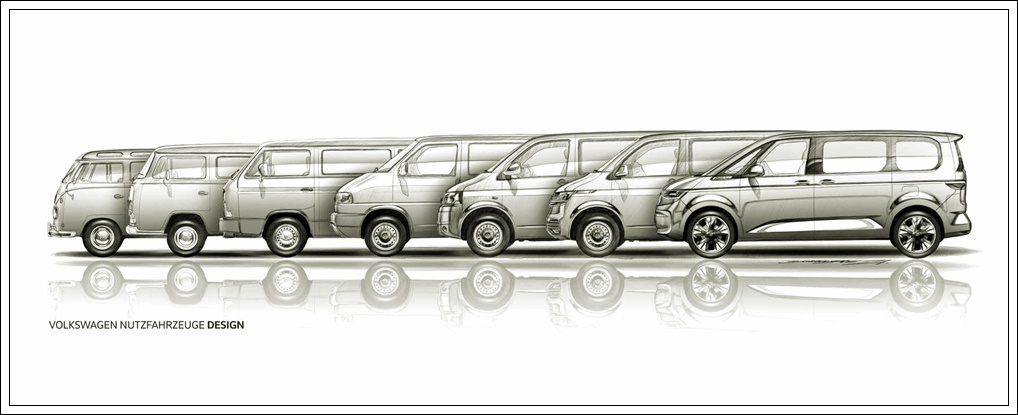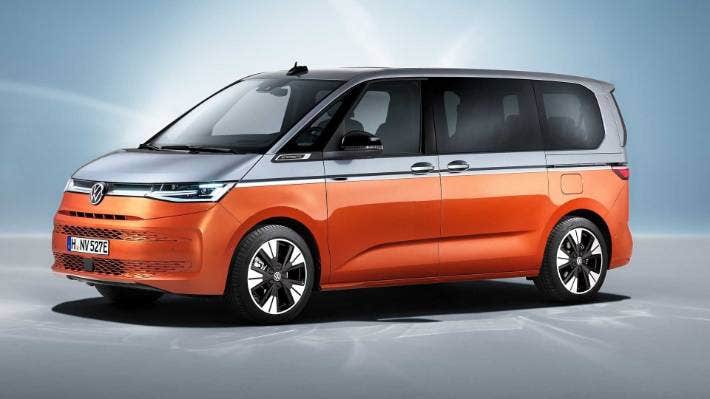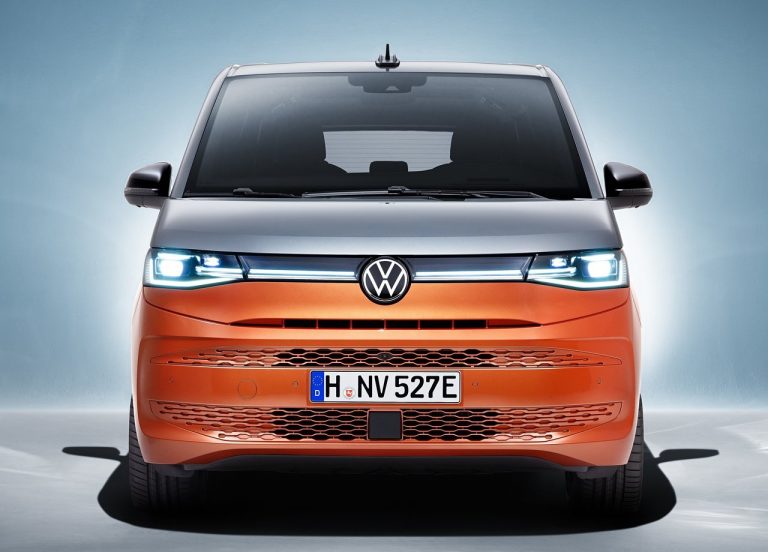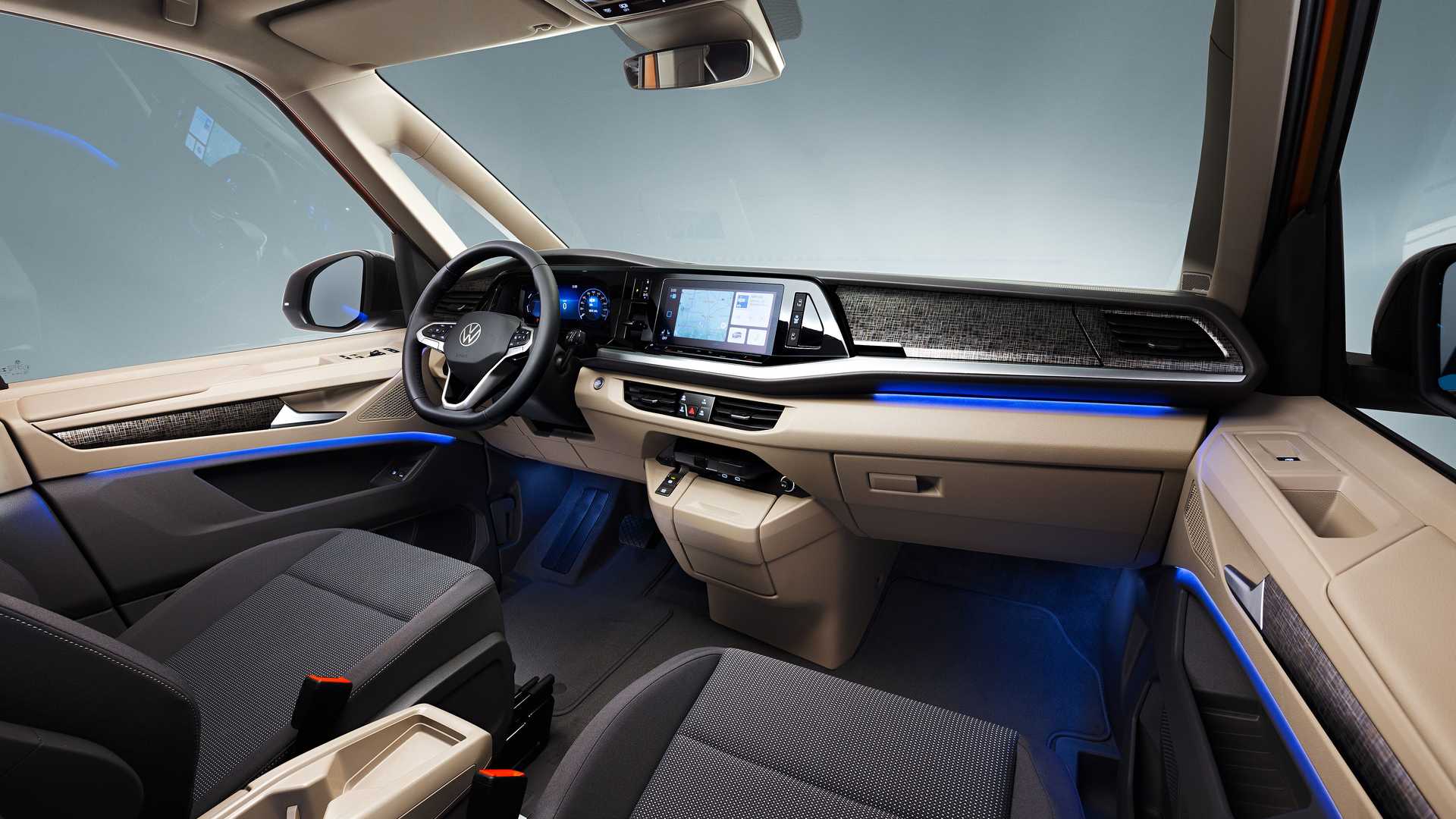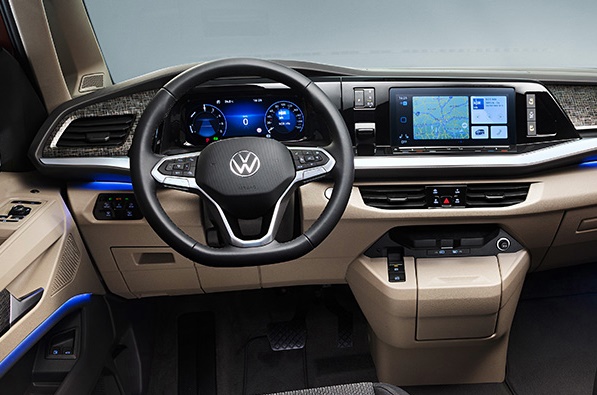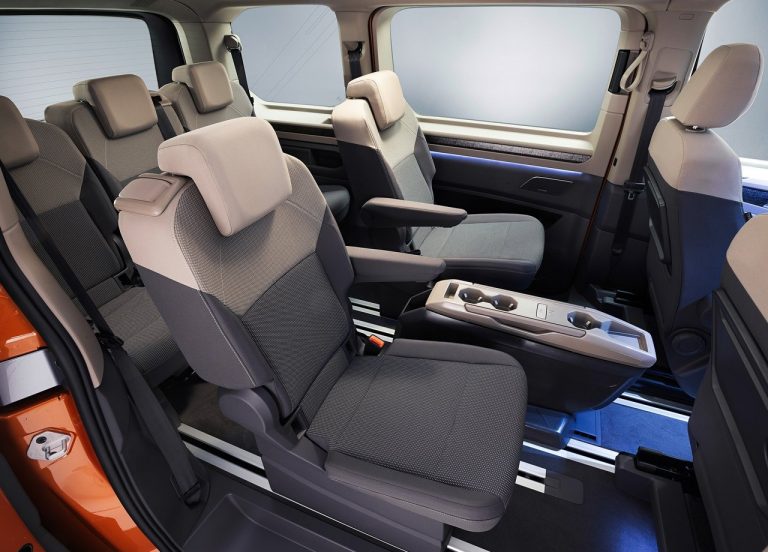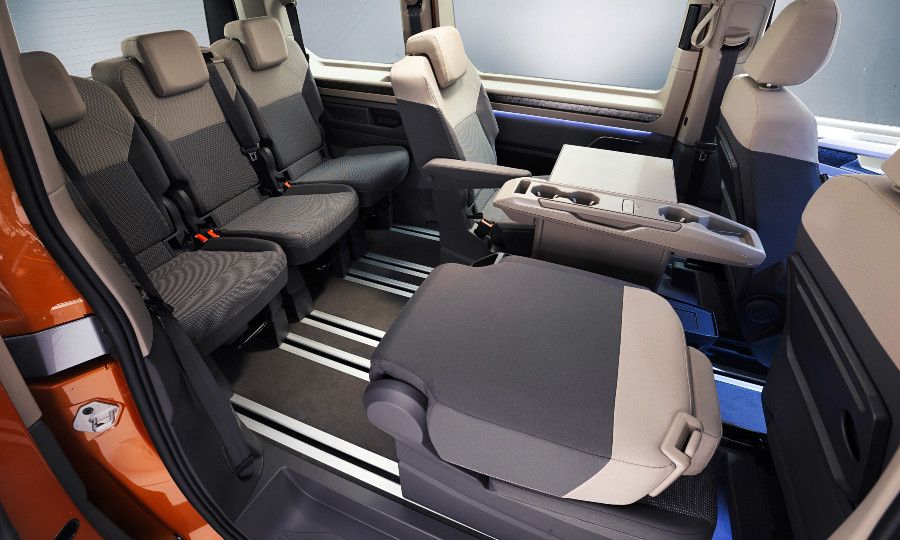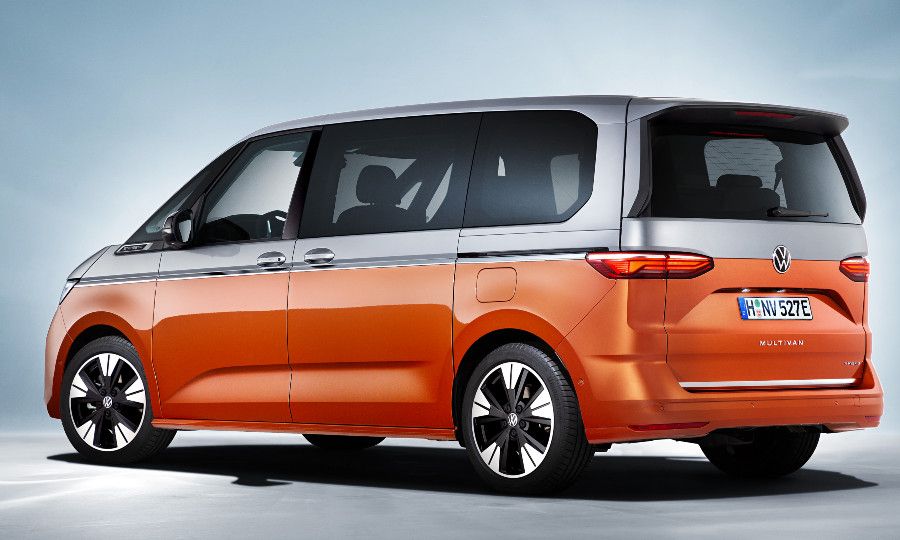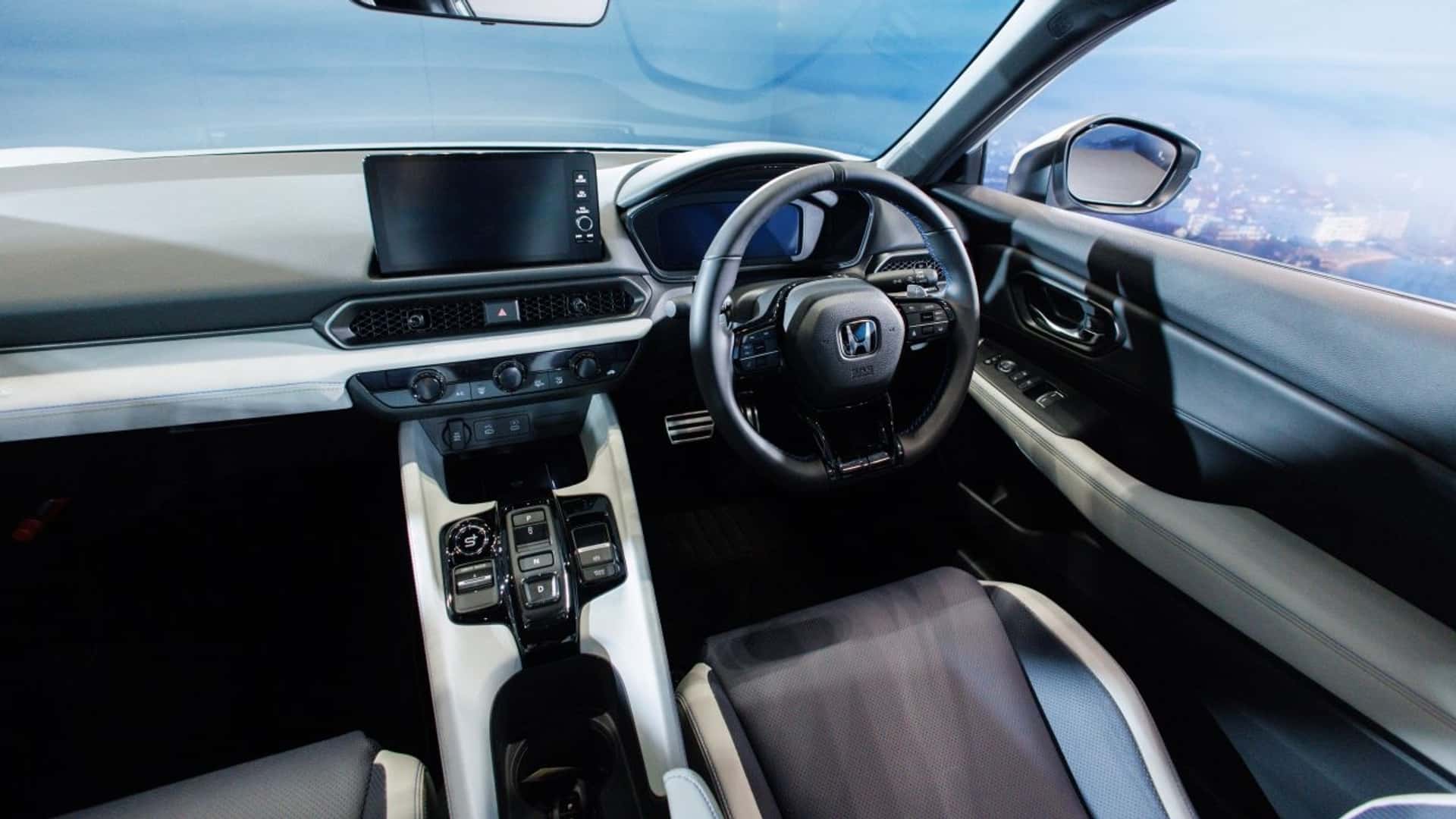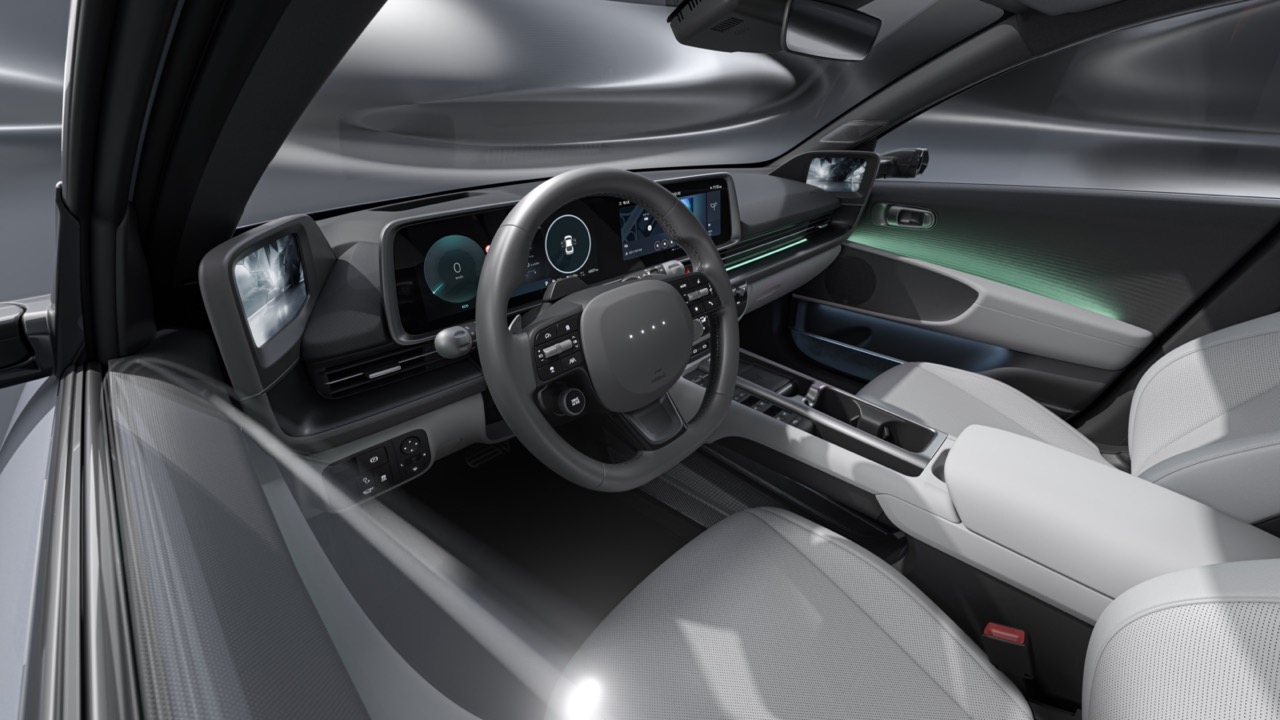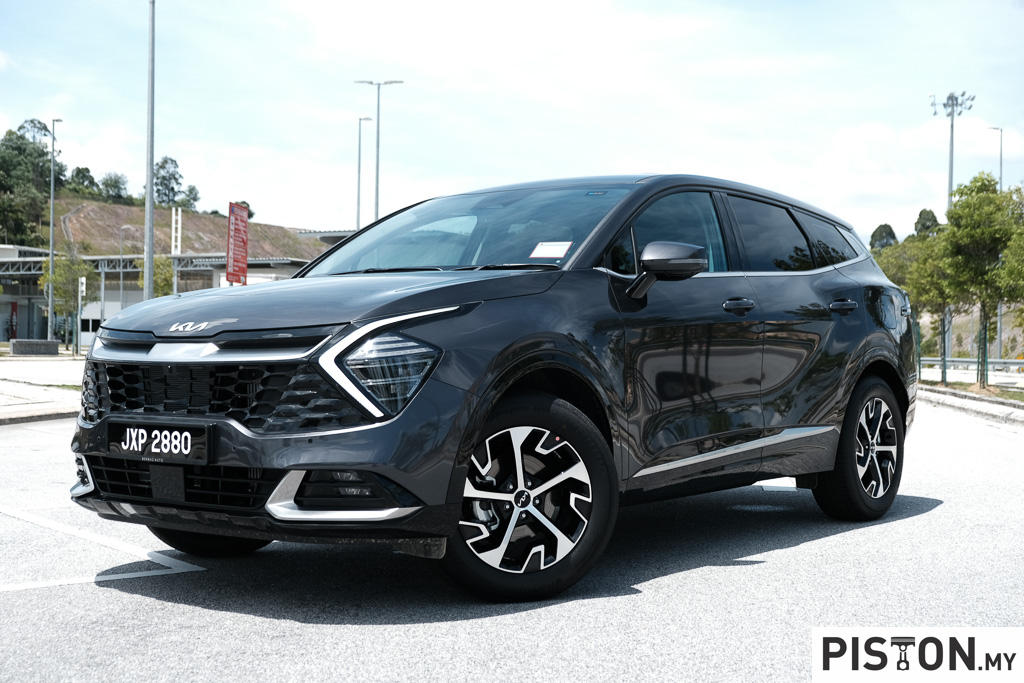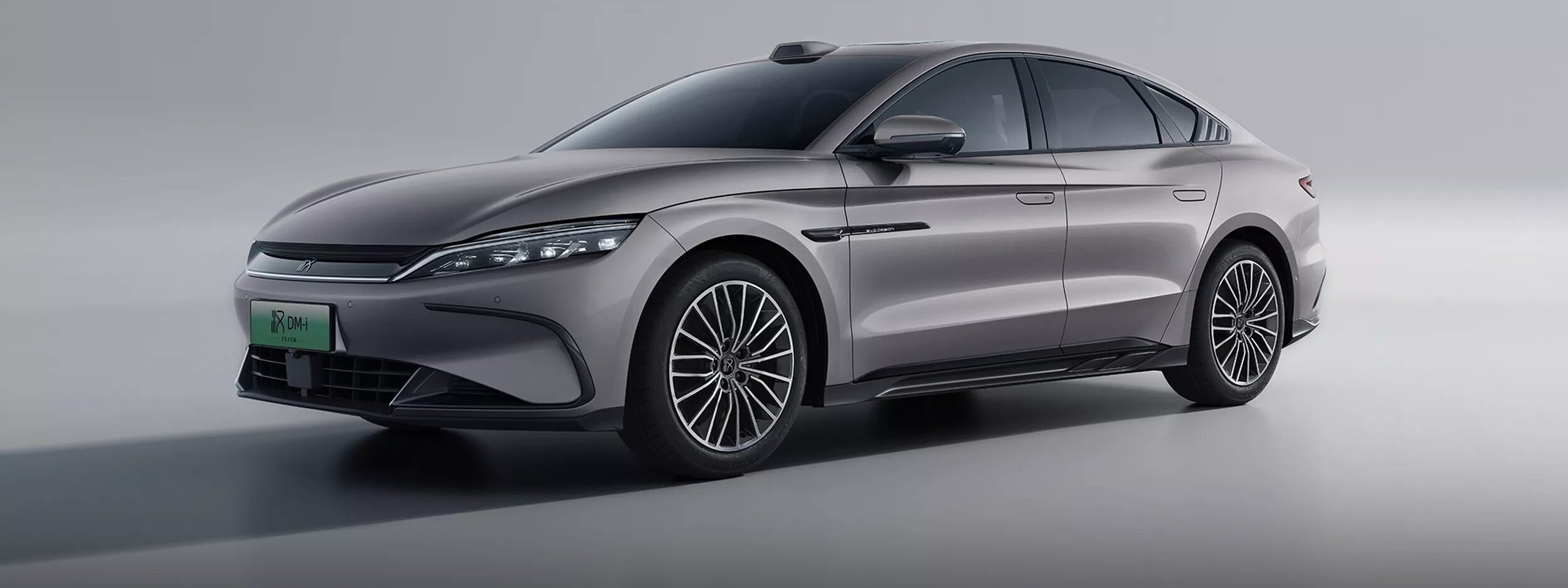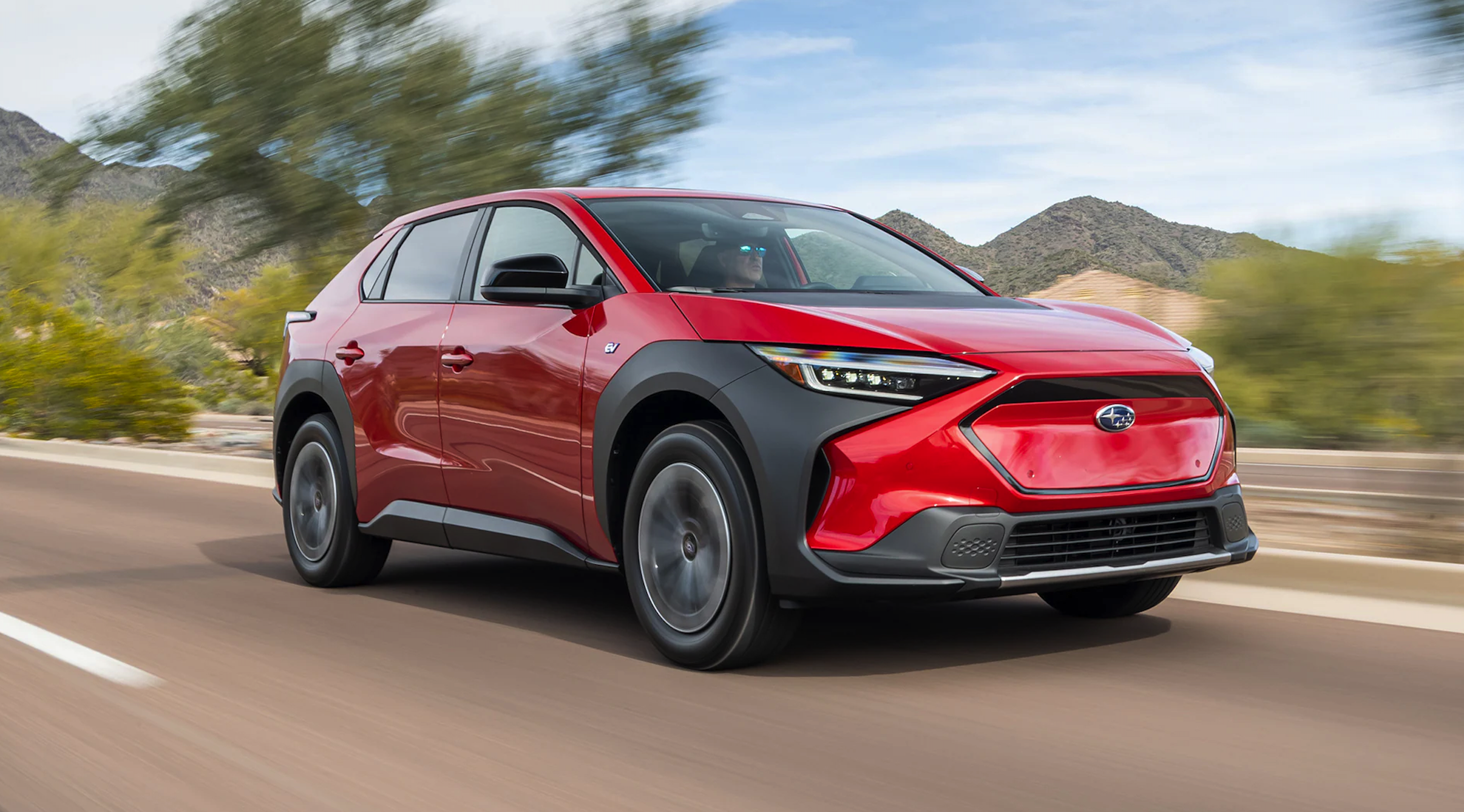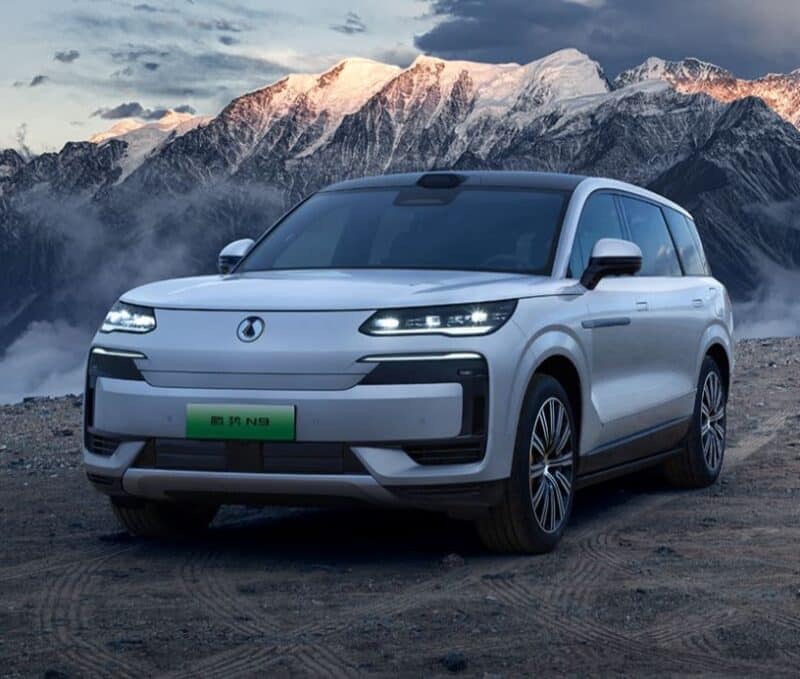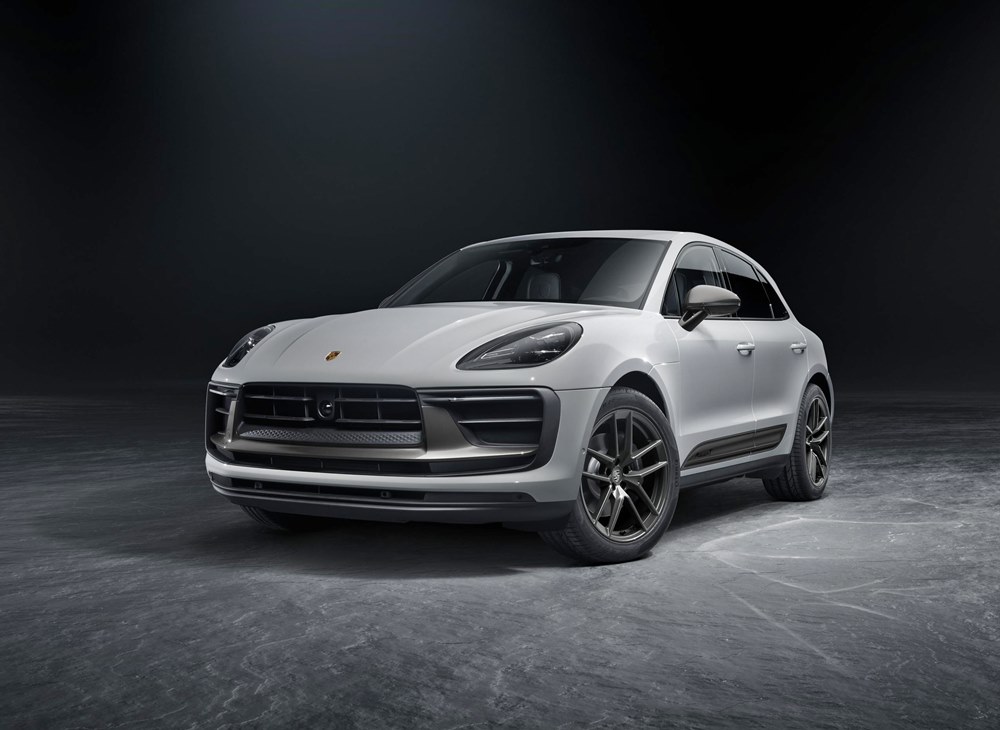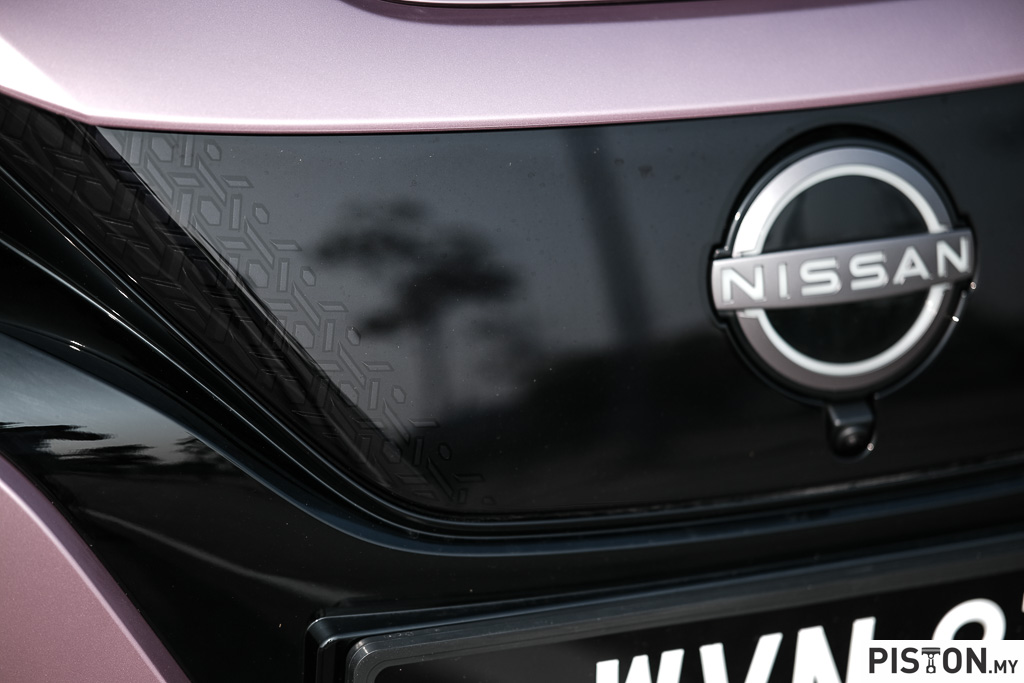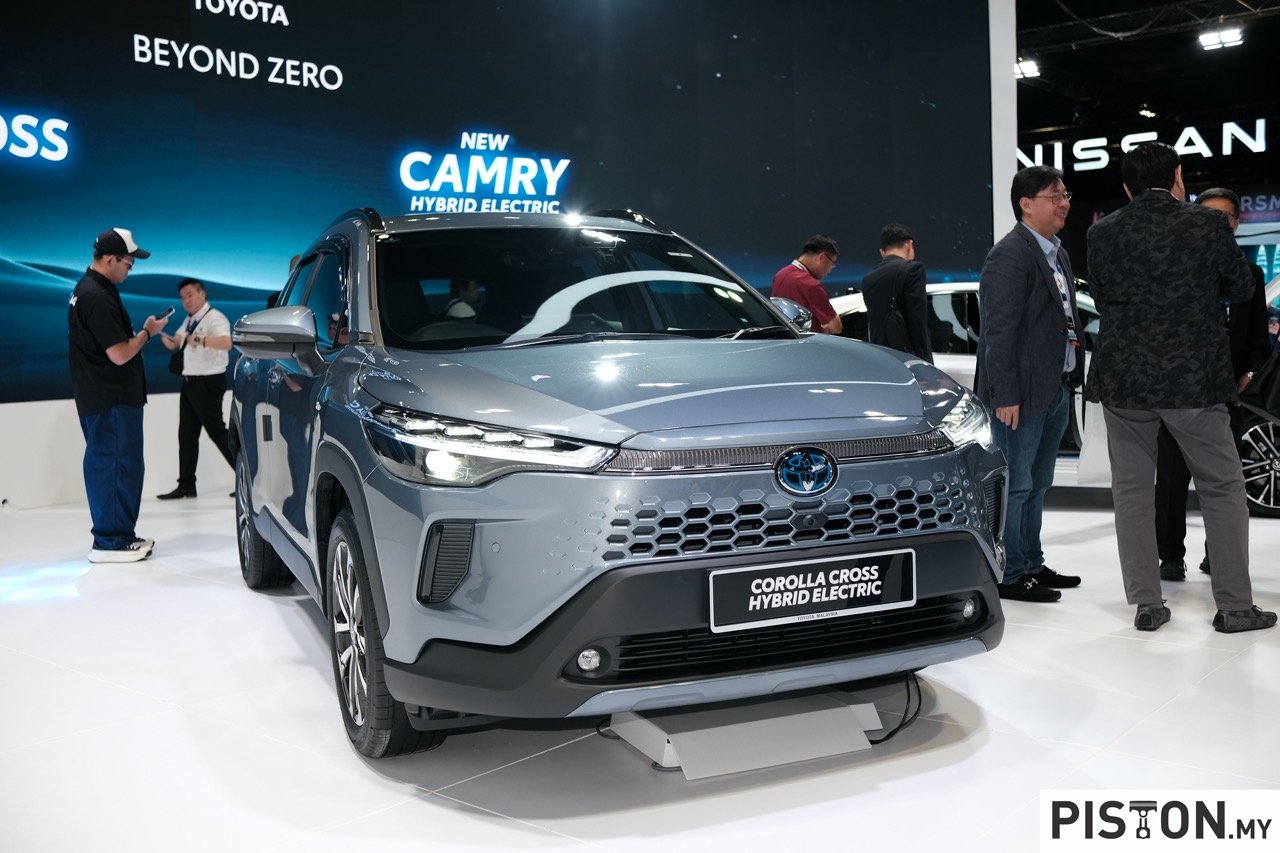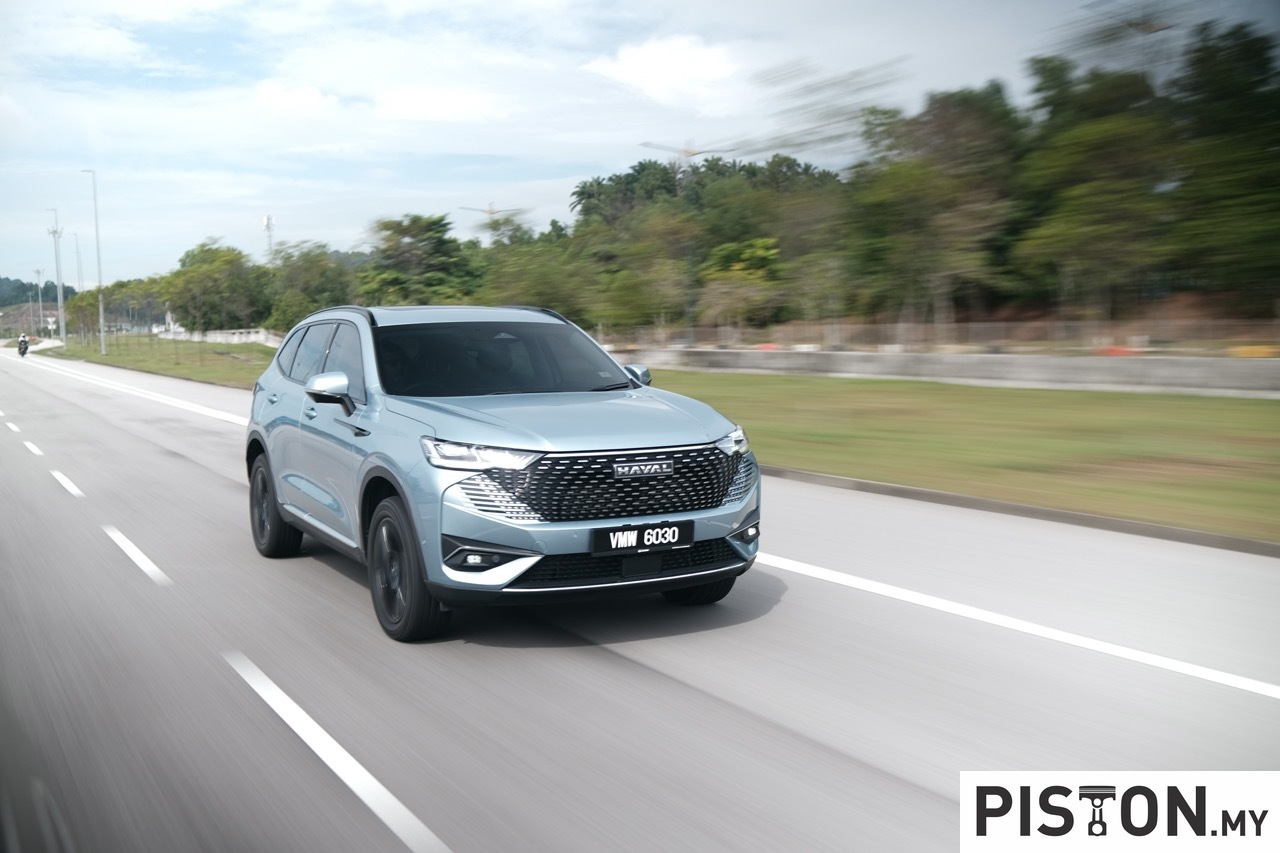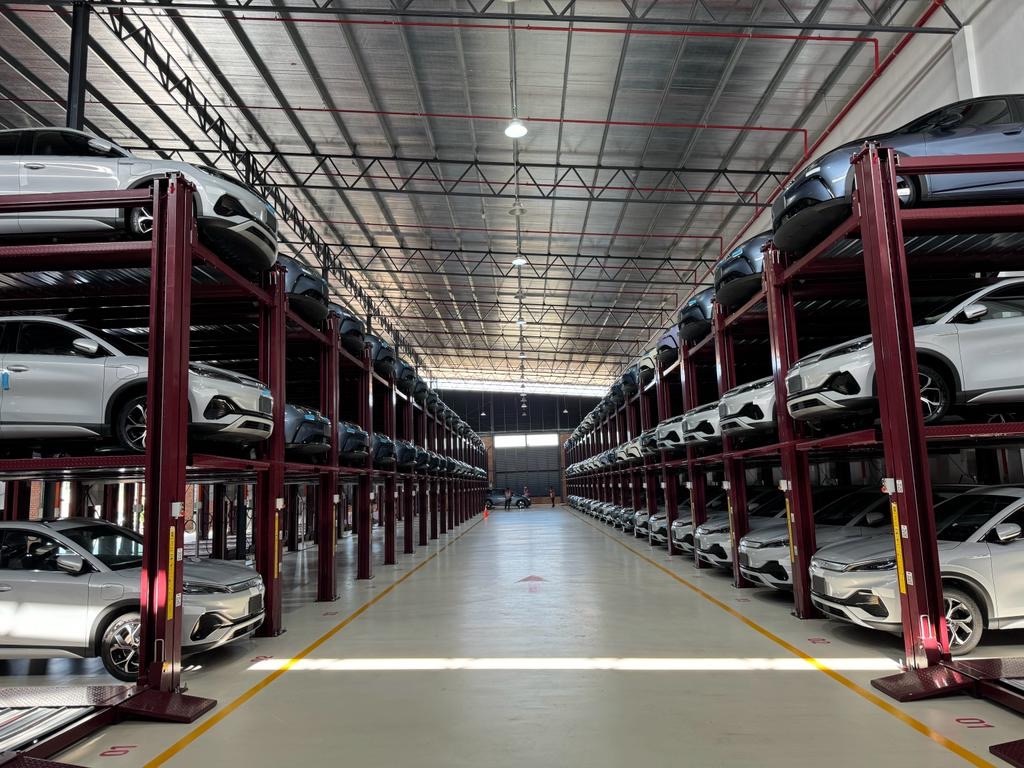The bestselling van in history, with over 12 million units sold worldwide, is the Volkswagen Transporter. While the earliest version which began in 1950 was on a Beetle platform, the model later gained its own ‘T platform’ from the 1990s for a variety of versions including minibuses, pick-ups and campervans.
From T platform to MQB platform
The current generation is the T6 Transporter with its people-mover variant known as the Caravelle. With the new T7 generation, the Transporter will leave the T platform behind in what will be the creation of a new model line named Multivan, while the current T6 is likely to continue as a commercial van for some time.
A trio of vans
The new Multivan (1941 mm wide, 4973 mm long) will ride on the Volkswagen Group’s MQB platform which should give it more versatility. It will be a less commercially-oriented product and is likely to become a significant MPV model range as well. In fact, Volkswagen has already indicated that the Multivan will be one of three members of a multi-purpose vehicle line-up that will include the T6 Transporter and all-electric ID. Buzz.
The exterior looks of the Multivan adopt the latest design language seen on the new Golf and Polo, and also pays homage to its predecessors, dating back to the 1985 Transporter T3. The front air intakes, painted in the same colour as the vehicle, have been reduced, paying tribute to the heritage of the rear air-cooled engines of the first three generations.
The colour scheme in the press photos goes with the cubic theme of the design which has clean surfaces and large glass panels all round. Also available is a panoramic glass roof with LowE laminated safety glass to reduce incoming thermal radiation by 44%.
PHEV for the first time
Volkswagen has a large number of markets and so its powertrain choices for the Multivan will need to take into consideration the less developed countries which will still want combustion engines. At the same time, for the markets where electrification is moving forward, there is a plug-in hybrid (PHEV)variant – the first time in this Volkswagen segment.
The Multivan PHEV will have a 1.4-litre TSI 150 ps petrol engine and an electric motor powered by a 13 kWh lithium-ion battery pack. The total system output is 218 ps with instantaneous torque which will provide brisk performance. Volkswagen does not give any numbers yet other that that, with a 6-speed DSG transmission, ‘short, urban trips’ are possible on pure electric power.
The combustion engine powertrains that will be available will be two 4-cylinder turbocharged petrol engines – 136 ps 1.5 TSI and 204 ps 2.0 TSI – and a 150 ps 4-cylinder turbodiesel. All the engines will deliver their power through a 7-speed DSG to the front wheels.
Semi-autonomous capability
The Multivan will have a lot of new and advanced tech, with more than 34 driver assist systems. Besides the ones that provide autonomous braking, lane-keeping and adaptive cruise control, there is also IQ.DRIVE Travel Assist which allows semi-autonomous driving by combining the predictive Adaptive Cruise Control and Lane Assist to make long-distance journeys safer and easier. It can be used up to 210 km/h.
Other new systems include Car2X – allowing local communication with other vehicles and the highways infrastructure in order to provide warnings of any danger ahead.
More flexible and spacious within
Inside, the new Volkswagen Multivan is more flexible and spacious than ever, with a new modular, lightweight seating system and innovative table. Seating layouts can be for 2 to 7 persons with removable seats and swivelling features.
The innovative multi-function table has been designed specially for the Multivan. Using the central track, it can be moved between any of the seating rows and also used as a centre console between the front seats. The table, which is completely removable, has adjustable height, three cupholders, and a storage bin.
The maximum cargo capacity with all rear seats removed is up to 4053 litres (depending on variant) with the longer 5173 mm version.
The new Multivan will go on sale later this year and while there will be a righthand drive version, it is hard to say whether it will be imported to Malaysia. The last time the model was sold (as the Caravelle) was in the 1990s when a small volume was assembled locally by Auto Dunia, which was then handling the Volkswagen brand.




